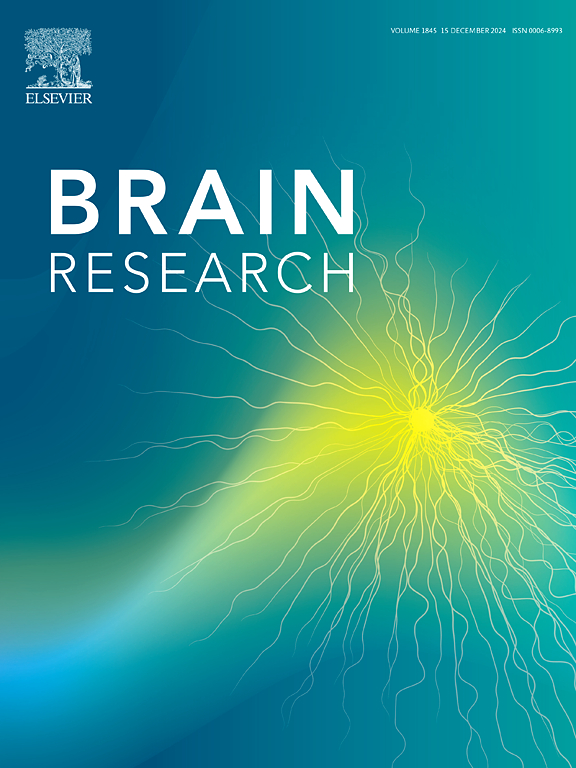In silico screening to search for selective sodium channel blockers: When size matters
IF 2.7
4区 医学
Q3 NEUROSCIENCES
引用次数: 0
Abstract
Dravet Syndrome is a severe childhood drug-resistant epilepsy. The predominant etiology of this condition is related to de novo mutations within the SCN1A gene, which codes for the alpha subunit of the NaV1.1 sodium channels. This dysfunction leads to hypoexcitability of GABAergic interneurons. In turn, the loss of electrical excitability in GABAergic interneurons leads to an imbalance of excitation over inhibition in many neural circuits.
Notably, exacerbation of symptoms is observed when non-selective sodium channel blockers are administered to patients with Dravet. Recent studies in animal models of Dravet have highlighted the potential of highly specific sodium channel blockers capable of blocking other sodium channel subtypes without inhibiting NaV1.1 current and selective activators of NaV1.1 as viable therapeutic strategies for alleviating Dravet Syndrome symptoms.
Here, we describe the development and validation of ligand-based machine learning models to identify ligands with inhibitory effects on sodium channel isoforms NaV1.1 and NaV1.2. These models were built based on in-house open-source routines and Mordred molecular descriptors. First, linear classifiers were inferred using a combination of feature-bagging and Forward Stepwise selection. Secondly, ensemble learning was applied to build meta-classifiers with improved predictive ability, whose performance was tested in retrospective screening experiments. After in silico validation, the models were applied to screen for drug repurposing opportunities in the DrugBank and Drug Repurposing Hub databases, to identify selective blocking agents of NaV1.2 devoid of NaV1.1 blocking activity, as potential compounds for the treatment of Dravet Syndrome.
Forty in silico hits were later identified in a prospective screening experiment. Four of them were acquired and submitted to experimental confirmation via patch clamp: three of these candidates, Eltrombopag, Sufugolix, and Glesatinib, showed blocking effects on NaV1.2 currents, although no subtype selectivity was observed. The different predictive abilities of the NaV1.1 and NaV1.2 models may be attributed to the different sizes of the datasets used to train and validate the respective models.

寻找选择性钠通道阻滞剂的硅筛选:当尺寸重要时。
德拉韦综合征是一种严重的儿童耐药癫痫。这种情况的主要病因与SCN1A基因内的新生突变有关,该基因编码NaV1.1钠通道的α亚基。这种功能障碍导致gaba能中间神经元的低兴奋性。反过来,gaba能中间神经元的电兴奋性丧失导致许多神经回路中兴奋超过抑制的不平衡。值得注意的是,当非选择性钠通道阻滞剂用于德拉韦患者时,观察到症状加重。最近在Dravet动物模型中的研究强调了高特异性钠通道阻滞剂的潜力,这些阻滞剂能够阻断其他钠通道亚型而不抑制NaV1.1电流和NaV1.1的选择性激活剂作为缓解Dravet综合征症状的可行治疗策略。在这里,我们描述了基于配体的机器学习模型的开发和验证,以识别对钠通道异构体NaV1.1和NaV1.2具有抑制作用的配体。这些模型是基于内部开源程序和莫德雷德分子描述符建立的。首先,使用特征bagging和正向逐步选择相结合来推断线性分类器。其次,应用集成学习构建预测能力提高的元分类器,并通过回顾性筛选实验对其性能进行检验。经过计算机验证后,这些模型被应用于筛选药物再利用的机会,在DrugBank和drug repurposing Hub数据库中,以确定没有NaV1.1阻断活性的NaV1.2选择性阻断剂,作为治疗Dravet综合征的潜在化合物。后来在前瞻性筛选实验中确定了40个硅命中。其中四种药物通过膜片钳获得并提交实验确认:其中三种候选药物,Eltrombopag, Sufugolix和Glesatinib,显示出对NaV1.2电流的阻断作用,尽管没有观察到亚型选择性。NaV1.1和NaV1.2模型的不同预测能力可能归因于用于训练和验证各自模型的数据集的不同大小。
本文章由计算机程序翻译,如有差异,请以英文原文为准。
求助全文
约1分钟内获得全文
求助全文
来源期刊

Brain Research
医学-神经科学
CiteScore
5.90
自引率
3.40%
发文量
268
审稿时长
47 days
期刊介绍:
An international multidisciplinary journal devoted to fundamental research in the brain sciences.
Brain Research publishes papers reporting interdisciplinary investigations of nervous system structure and function that are of general interest to the international community of neuroscientists. As is evident from the journals name, its scope is broad, ranging from cellular and molecular studies through systems neuroscience, cognition and disease. Invited reviews are also published; suggestions for and inquiries about potential reviews are welcomed.
With the appearance of the final issue of the 2011 subscription, Vol. 67/1-2 (24 June 2011), Brain Research Reviews has ceased publication as a distinct journal separate from Brain Research. Review articles accepted for Brain Research are now published in that journal.
 求助内容:
求助内容: 应助结果提醒方式:
应助结果提醒方式:


